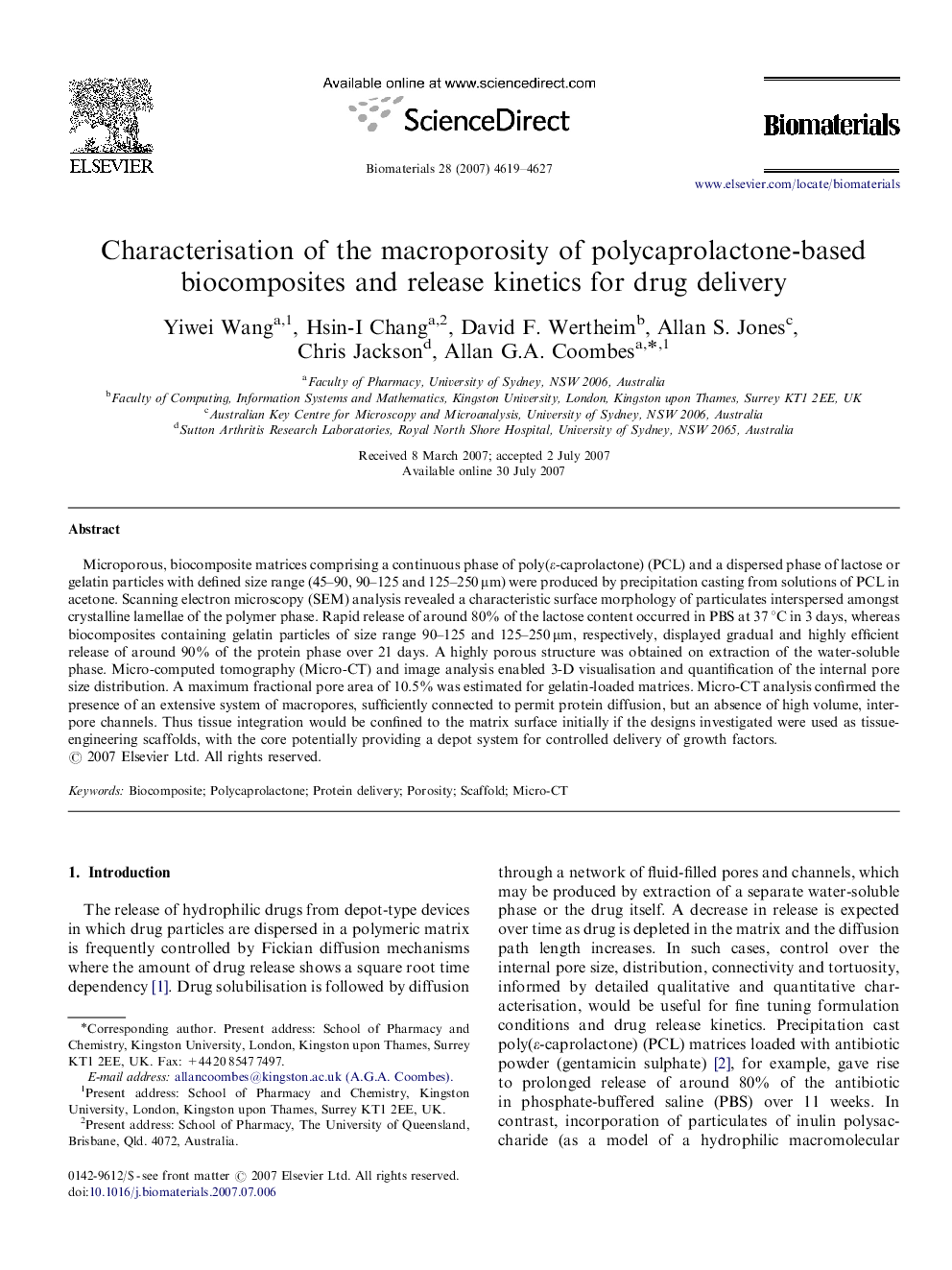| Article ID | Journal | Published Year | Pages | File Type |
|---|---|---|---|---|
| 10667 | Biomaterials | 2007 | 9 Pages |
Microporous, biocomposite matrices comprising a continuous phase of poly(ε-caprolactone) (PCL) and a dispersed phase of lactose or gelatin particles with defined size range (45–90, 90–125 and 125–250 μm) were produced by precipitation casting from solutions of PCL in acetone. Scanning electron microscopy (SEM) analysis revealed a characteristic surface morphology of particulates interspersed amongst crystalline lamellae of the polymer phase. Rapid release of around 80% of the lactose content occurred in PBS at 37 °C in 3 days, whereas biocomposites containing gelatin particles of size range 90–125 and 125–250 μm, respectively, displayed gradual and highly efficient release of around 90% of the protein phase over 21 days. A highly porous structure was obtained on extraction of the water-soluble phase. Micro-computed tomography (Micro-CT) and image analysis enabled 3-D visualisation and quantification of the internal pore size distribution. A maximum fractional pore area of 10.5% was estimated for gelatin-loaded matrices. Micro-CT analysis confirmed the presence of an extensive system of macropores, sufficiently connected to permit protein diffusion, but an absence of high volume, inter-pore channels. Thus tissue integration would be confined to the matrix surface initially if the designs investigated were used as tissue-engineering scaffolds, with the core potentially providing a depot system for controlled delivery of growth factors.
